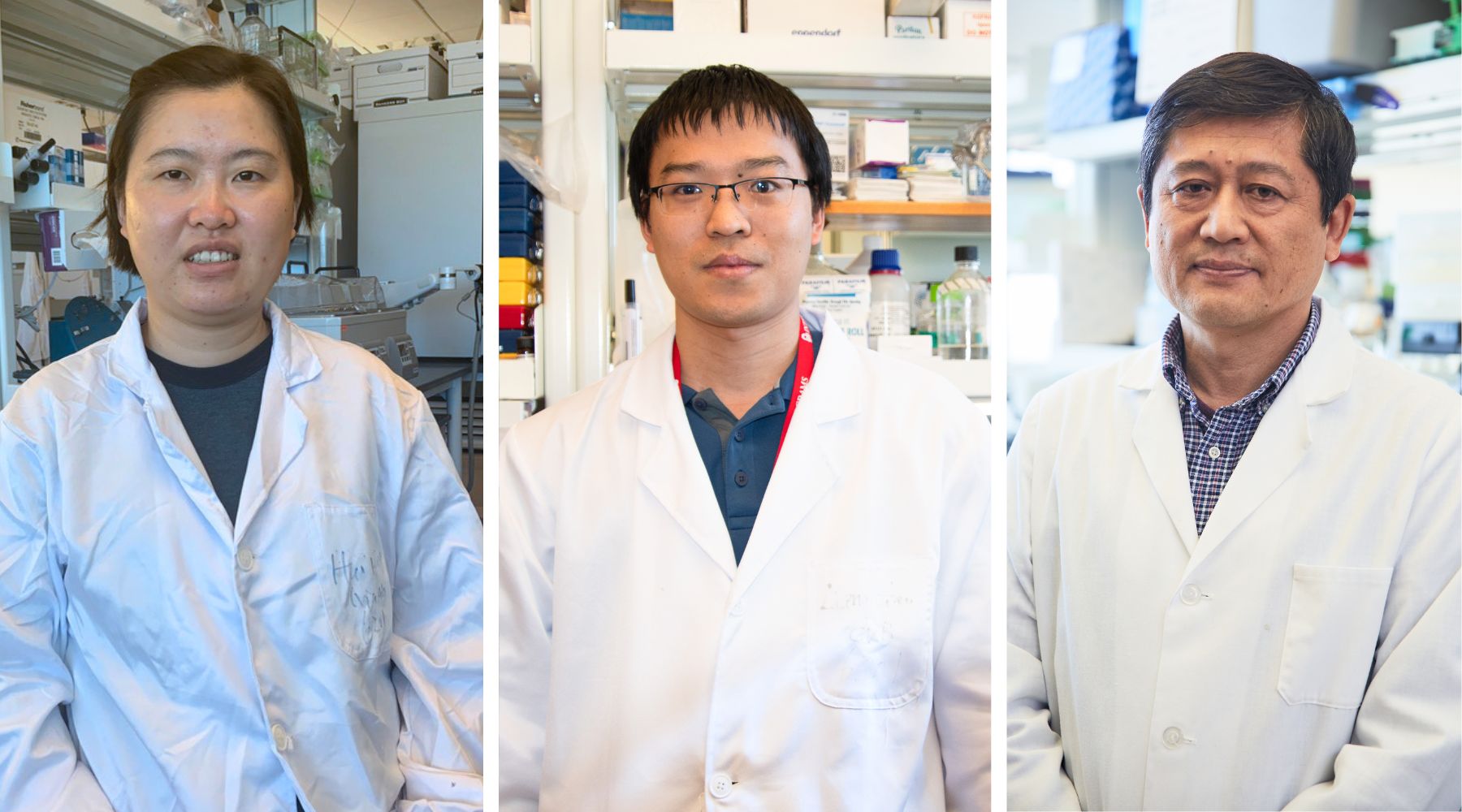Oklahoma Medical Research Foundation scientists have discovered a potential new approach to treating sickle cell disease, the most common inherited blood disorder in the U.S.
Their work could someday lead to a new drug to treat the active pain crises that accompany the disease or perhaps prevent them all together.
“Although sickle cell was identified more than a century ago, only more recently has it begun to receive the degree of research it deserves,” said OMRF Cardiovascular Biology Research Program Chair Lijun Xia, M.D., Ph.D., who led the study. “These experiments show potential to enhance the quality of life for patients living with sickle cell worldwide.”
In sickle cell disease, red blood cells change in shape and texture. Normally pliable and round, they become rigid and sticky in the form of a crescent or “sickle,” resulting in clogs in blood vessels that cause inflammation, excruciating pain and organ damage. These attacks can last for weeks and often require hospitalization.
A 2023 University of Washington study estimated the global number of people with sickle cell at nearly 8 million. The condition is most prevalent in Africa and the Caribbean. About 100,000 Americans live with the disease, according to the Centers for Disease Control and Prevention. Most are of African descent.
The first targeted therapy approved in the U.S. to reduce the frequency of pain crises in sickle cell disease was based on the discoveries of OMRF Distinguished Career Scientist Rod McEver, M.D.
While there have been several advances for treating sickle cell in recent years, no current treatment mitigates the length or severity of an ongoing pain crisis. Over time, these episodes damage blood vessels and organs and usually shorten the patient’s lifespan.
Previous studies by Xia’s lab and others identified a molecule called von Willebrand factor as the source of vascular clogs involved with sickle cell pain crises in patients and research models. In this new study, Xia and two postdoctoral scientists, Huiping Shi, Ph.D., and Liang Gao, Ph.D., found that a particular type of white blood cell in the liver can consume overabundant von Willebrand factor molecules and restore the balance needed to stop vascular clogs.
Xia, who holds the Merrick Foundation Chair in Biomedical Research at OMRF, also discovered that oral doses of an experimental compound activate these white blood cells against von Willebrand factor. In research models, the compound alleviated existing blood vessel clogs and prevented new ones from forming.
“Dr. Xia continues to build on our foundational understanding of sickle cell, and this discovery appears headed toward a solution that attacks the root of these pain crises,” said OMRF Vice President of Research Courtney Griffin, Ph.D. “Ultimately, his research could be life-altering for generations to come.”
The research was published in the journal Blood. The work was funded by grant No. HL149860 from the National Heart, Lung, and Blood Institute, and by grants from the Oklahoma City-based Presbyterian Health Foundation and the Oklahoma Center for Adult Stem Cell Research, a program of TSET.



